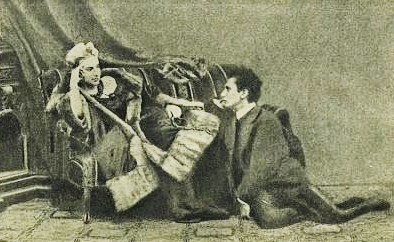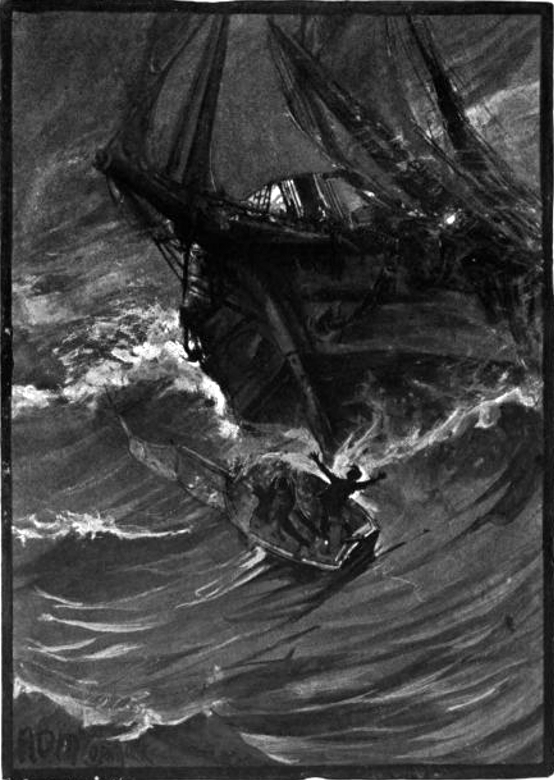|
Penguin Red Classics
''Penguin Red Classics'' is a series of novels published by Penguin Books in the UK. There are 39 books in the series. The books are from the Penguin Classics imprint, but do not contain any introductory material or commentary, instead focussing on the story. The books References {{reflist, refs= {{cite web , title = Published Reds , url = http://penguinclassics.com/reds/published.html , magazine = Penguin Classics , access-date = 6 June 2016 , archive-url = https://web.archive.org/web/20090918134225/http://www.penguinclassics.co.uk/static/cs/uk/10/minisites/penguinreds/published.html , archive-date = 18 September 2009 , url-status = dead {{cite web , title = Red Classics , url = http://penguinclassics.com/reds/ , magazine = Penguin Classics , access-date = 6 June 2016 , archive-url = https://web.archive.org/web/20090919071821/http://www.penguinclassics.co.uk/static/cs/uk/10/minisites/penguinreds/index.html , ... [...More Info...] [...Related Items...] OR: [Wikipedia] [Google] [Baidu] |
Penguin Books
Penguin Books is a British publishing house. It was co-founded in 1935 by Allen Lane with his brothers Richard and John, as a line of the publishers The Bodley Head, only becoming a separate company the following year."About Penguin – company history" , Penguin Books. Penguin revolutionised publishing in the 1930s through its inexpensive paperbacks, sold through and other stores for sixpence, bringing high-quality fictio ... [...More Info...] [...Related Items...] OR: [Wikipedia] [Google] [Baidu] |
Great Expectations
''Great Expectations'' is the thirteenth novel by Charles Dickens and his penultimate completed novel. It depicts the education of an orphan nicknamed Pip (Great Expectations), Pip (the book is a ''bildungsroman''; a coming-of-age story). It is Dickens' second novel, after ''David Copperfield'', to be fully narrated in the first person.''Bleak House'' alternates between a third-person narrator and a first-person narrator, Esther Summerson, but the former is predominant. The novel was first published as a serial (literature), serial in Dickens's weekly periodical ''All the Year Round'', from 1 December 1860 to August 1861. In October 1861, Chapman and Hall published the novel in three volumes. The novel is set in Kent and London in the early to mid-19th century and contains some of Dickens's most celebrated scenes, starting in a graveyard, where the young Pip is accosted by the escaped convict Abel Magwitch. ''Great Expectations'' is full of extreme imagery – poverty, prison ... [...More Info...] [...Related Items...] OR: [Wikipedia] [Google] [Baidu] |
The Strange Case Of Dr Jekyll And Mr Hyde
''Strange Case of Dr Jekyll and Mr Hyde'' is a 1886 Gothic fiction, Gothic novella by Scottish author Robert Louis Stevenson. It follows Gabriel John Utterson, a London-based legal practitioner who investigates a series of strange occurrences between his old friend Dr. Jekyll and Mr. Hyde (character), Dr. Henry Jekyll and a murderous criminal named Edward Hyde. ''Strange Case of Dr Jekyll and Mr Hyde'' is one of the most famous pieces of English literature, and is considered to be a defining book of the gothic horror genre. The novella has also had a sizable impact on popular culture, with the phrase "Jekyll and Hyde" being used in vernacular to refer to people with an outwardly good but sometimes shockingly evil nature. Inspiration and writing Stevenson had long been intrigued by the idea of how human personalities can reflect the interplay of good and evil. While still a teenager, he developed a script for a play about William Brodie, which he later reworked with the help o ... [...More Info...] [...Related Items...] OR: [Wikipedia] [Google] [Baidu] |
Of Mice And Men
''Of Mice and Men'' is a novella written by John Steinbeck. Published in 1937, it narrates the experiences of George Milton and Lennie Small, two displaced migrant ranch workers, who move from place to place in California in search of new job opportunities during the Great Depression in the United States. Steinbeck based the novella on his own experiences working alongside migrant farm workers as a teenager in the 1910s (before the arrival of the Okies that he would describe in '' The Grapes of Wrath''). The title is taken from Robert Burns' poem " To a Mouse", which reads: "The best laid schemes o' mice an' men / Gang aft agley". (The best laid schemes of mice and men / Often go awry.) While it is a book taught in many schools, ''Of Mice and Men'' has been a frequent target of censors for vulgarity, and what some consider offensive and racist language; consequently, it appears on the American Library Association's list of the ''Most Challenged Books of the 21st Century''. ... [...More Info...] [...Related Items...] OR: [Wikipedia] [Google] [Baidu] |
Frankenstein
''Frankenstein; or, The Modern Prometheus'' is an 1818 novel written by English author Mary Shelley. ''Frankenstein'' tells the story of Victor Frankenstein, a young scientist who creates a sapient creature in an unorthodox scientific experiment. Shelley started writing the story when she was 18, and the first edition was published anonymously in London on 1 January 1818, when she was 20. Her name first appeared in the second edition, which was published in Paris in 1821. Shelley travelled through Europe in 1815, moving along the river Rhine in Germany, and stopping in Gernsheim, away from Frankenstein Castle, where, two centuries before, an alchemist had engaged in experiments.This seems to mean Johann Konrad Dippel (1673–1734), one century before (not two). For Dippel's experiments and the possibility of connection to ''Frankenstein'' see the Dippel article. She then journeyed to the region of Geneva, Switzerland, where much of the story takes place. Galvanism ... [...More Info...] [...Related Items...] OR: [Wikipedia] [Google] [Baidu] |
Venus In Furs
''Venus in Furs'' (german: Venus im Pelz, links=no) is a novella by the Austrian author Leopold von Sacher-Masoch, and the best known of his works. The novel was to be part of an epic series that Sacher-Masoch envisioned called '' Legacy of Cain'' (). ''Venus in Furs'' was part of ''Love'' (), the first volume of the series. It was published in 1870. Novel The novel draws themes, like female dominance and sadomasochism, and character inspiration heavily from Sacher-Masoch's own life. Wanda von Dunajew, the novel's central female character, was modelled after Fanny Pistor, who was an emerging literary writer. The two met when Pistor contacted Sacher-Masoch, under the assumed name and fictitious title of Baroness Bogdanoff, for suggestions on improving her writing to make it suitable for publication. Plot summary The framing story concerns a man who dreams of speaking to Venus about love while she wears furs. The unnamed narrator tells his dreams to a friend, Severin, who tel ... [...More Info...] [...Related Items...] OR: [Wikipedia] [Google] [Baidu] |
The Narrative Of Arthur Gordon Pym
''The Narrative of Arthur Gordon Pym of Nantucket'' (1838) is the only complete novel written by American writer Edgar Allan Poe. The work relates the tale of the young Arthur Gordon Pym, who stows away aboard a whaling ship called the ''Grampus''. Various adventures and misadventures befall Pym, including shipwreck, mutiny, and cannibalism, before he is saved by the crew of the ''Jane Guy''. Aboard this vessel, Pym and a sailor named Dirk Peters continue their adventures farther south. Docking on land, they encounter hostile black-skinned natives before escaping back to the ocean. The novel ends abruptly as Pym and Peters continue toward the South Pole. The story starts out as a fairly conventional adventure at sea, but it becomes increasingly strange and hard to classify. Poe, who intended to present a realistic story, was inspired by several real-life accounts of sea voyages, and drew heavily from Jeremiah N. Reynolds and referenced the Hollow Earth theory. He also drew from ... [...More Info...] [...Related Items...] OR: [Wikipedia] [Google] [Baidu] |
A Spy In The House Of Love
''A Spy in the House of Love'' is a 1954 novel by Anaïs Nin. Alongside her other novels, ''Ladders to Fire'', ''Children of the Albatross'', ''The Four-Chambered Heart'' and ''Seduction of the Minotaur'', it was gathered into a collection known as ''Cities of the Interior''. The novel follows the character of Sabina, a woman who enjoys the sexual licence typically associated with men. Sabina wears extravagant outfits and deliberately avoids romantic commitments. She pursues sexual pleasure in isolation of any other romantic attachment. Plot summary In 1950s New York, protagonist, Sabina, pursues her sexual desires. She calls a random number from a bar in the middle of the night, seeking to confess or find solace in the voice of a stranger. The stranger happens to be a lie detector who proceeds to follow Sabina in her activities throughout the novel. Her various love interests and her relationship with her husband, Alan, without whom she feels she cannot live, make her life more ... [...More Info...] [...Related Items...] OR: [Wikipedia] [Google] [Baidu] |
Lolita
''Lolita'' is a 1955 novel written by Russian-American novelist Vladimir Nabokov. The novel is notable for its controversial subject: the protagonist and unreliable narrator, a middle-aged literature professor under the pseudonym Humbert Humbert, is obsessed with a 12-year-old girl, Dolores Haze, whom he kidnaps and sexually abuses after becoming her stepfather. "Lolita", the Spanish nickname for Dolores, is what he calls her privately. The novel was originally written in English and first published in Paris in 1955 by Olympia Press. The novel has been twice adapted into film: first by Stanley Kubrick in 1962, and later by Adrian Lyne in 1997. It has also been adapted several times for the stage and has been the subject of two operas, two ballets, and an acclaimed, but commercially unsuccessful, Broadway musical. It has been included in many lists of best books, such as '' Time'' List of the 100 Best Novels, '' Le Monde'' 100 Books of the Century, Bokklubben World L ... [...More Info...] [...Related Items...] OR: [Wikipedia] [Google] [Baidu] |
Love In The Time Of Cholera
''Love in the Time of Cholera'' ( es, El amor en los tiempos del cólera) is a novel written in Spanish by Colombian Nobel Prize-winning author Gabriel García Márquez and published in 1985. Edith Grossman's English translation was published by Alfred A. Knopf in 1988. Plot summary The main characters of the novel are Florentino Ariza and Fermina Daza. Florentino and Fermina fall in love in their youth. A secret relationship blossoms between the two with the help of Fermina's Aunt Escolástica. They exchange love letters. But once Fermina's father, Lorenzo Daza, finds out about the two, he forces his daughter to stop seeing Florentino immediately. When she refuses, he and his daughter move in with his deceased wife's family in another city. Regardless of the distance, Fermina and Florentino continue to communicate via telegraph. Upon her return, Fermina realizes that her relationship with Florentino was nothing but a dream since they are practically strangers; she breaks off he ... [...More Info...] [...Related Items...] OR: [Wikipedia] [Google] [Baidu] |
The Metamorphosis
''Metamorphosis'' (german: Die Verwandlung) is a novella written by Franz Kafka which was first published in 1915. One of Kafka's best-known works, ''Metamorphosis'' tells the story of salesman Gregor Samsa, who wakes one morning to find himself inexplicably transformed into a huge insect (german: ungeheueres Ungeziefer, "monstrous vermin") and subsequently struggles to adjust to this new condition. The novella has been widely discussed among literary critics, with differing interpretations being offered. In popular culture and adaptations of the novella, the insect is commonly depicted as a cockroach. Plot Gregor Samsa wakes up one morning to find himself transformed into a "monstrous vermin". He initially considers the transformation to be temporary and slowly ponders the consequences of this metamorphosis. Stuck on his back and unable to get up and leave the bed, Gregor reflects on his job as a traveling salesman and cloth merchant, which he characterizes as being full o ... [...More Info...] [...Related Items...] OR: [Wikipedia] [Google] [Baidu] |




_Irish_Frankenstein_(cropped).jpg)

